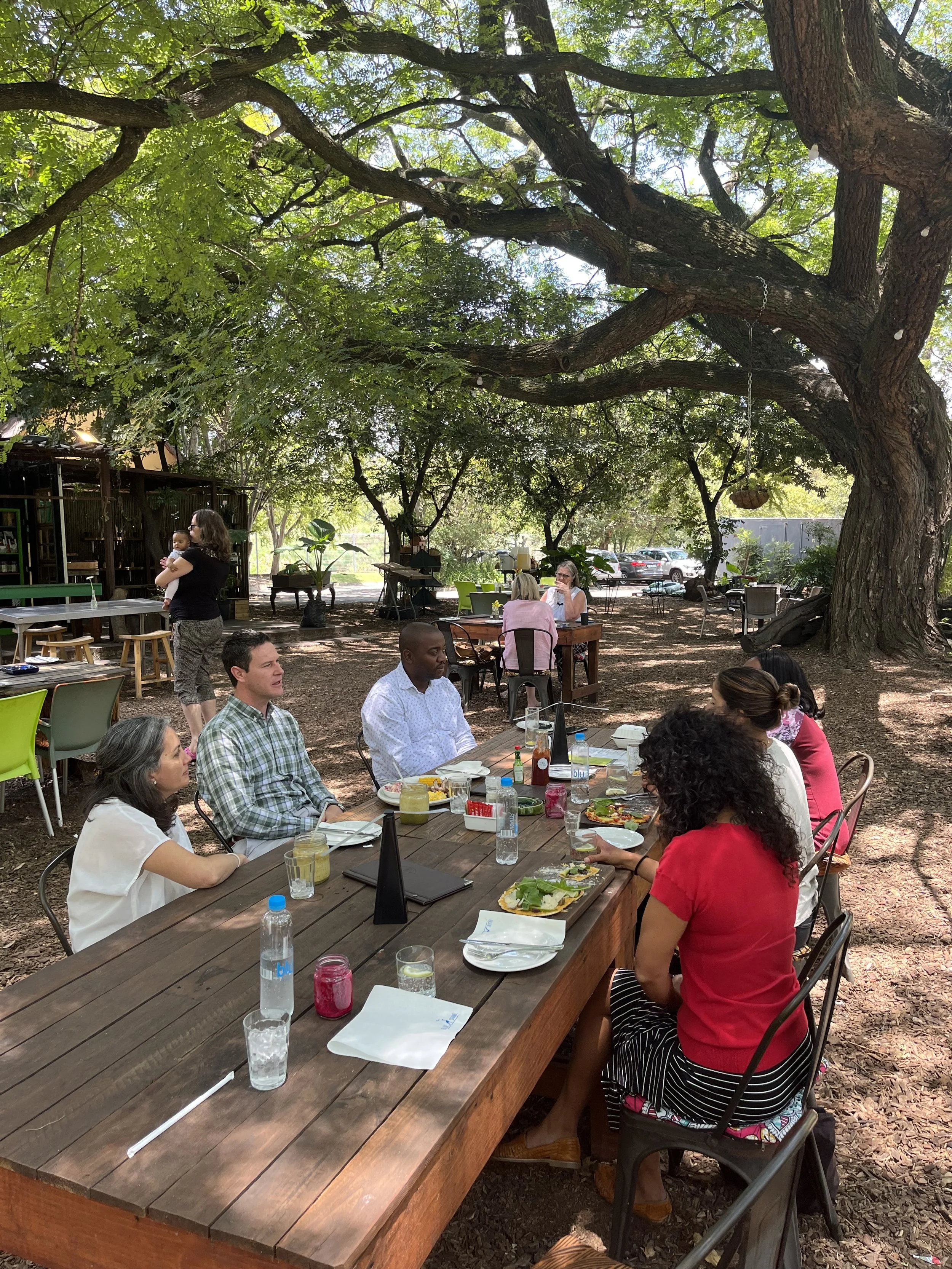Case Study
USAID Southern Africa
How can we help USAID’s Southern Africa Regional Mission’s Environment & Energy Team bring energy, delight, and creativity to the creation of a new 5-year strategy?
The Need
The Environment and Energy Team at USAID’s Southern Africa Regional Mission is set up to support thriving energy and environmental systems in eleven countries in Southern Africa. Given the fact that it is a regional entity, it is aimed at supporting cross-border collaboration to address cross-border environmental challenges.
Southern Africa is a diverse region, in both cultures and landscapes. In addition, the region is very biodiverse; it is home to 90 percent of the world’s remaining rhinos, large elephant populations, and other species which face threats from poaching for the illegal wildlife trade. Climate change threatens Southern Africa’s biodiversity, wildlife, and local economies, especially as most countries are water-scarce or water-stressed. Persistent and growing water and land pollution which has adverse impacts on water, wildlife, and people’s health. At the same time, natural resources play a key role in the region’s economies and livelihoods.
As the team was wrapping up their existing 5-year strategy, they needed a partner to accompany them on a strategy redesign process that brought together everything they had learned over the past five years. And given the gravity of the topics they are focused on and the issues they are up against, they sought a partner that could bring forward energy, delight and creativity in the strategy development process.
That’s where we came in.
What We Did
We worked with the E&E team to handpick and tailor the perfect collective of Convive experts to accompany them at this pivotal moment of learning and transformation.
We began by deeply listening and understanding their context, challenges, and goals. From there, we facilitated a sensemaking workshop to synthesize their key learnings over the past five years across their strategic areas of focus.
As a strategy and learning partner, we worked with the team to reimagine their new 5-year strategy, as well as how they would put the strategy into action internally. This involved a light touch team health assessment that we carried out alongside the strategy development process.
This culminated in a team retreat that prioritized connection, clarity in the strategy and collective decision-making tendencies, and the establishment of existing and new team norms.
When the strategy was finalized and the team was feeling energized about it, we worked with them to host a strategy roadshow across the region. This was an important opportunity for the team to articulate the strategy in their own words, as well as an opportunity to gain feedback, increased clarity, and new ideas from key partners and colleagues.
To conclude, we accompanied the team during the initial stages of strategy implementation to ensure alignment and continued clarity.
Benefits & Outcomes
Strategy development processes can and should be fun, engaging, and enlightening. At their best, strategy development processes are an opportunity for imagination and visioning. And it’s best to do that type of thinking from a place of appreciation, safety, and relaxation.
-
A good strategy development process is not only inspiring, but it also results in changes in the way team members view their work, contribution, connection to each other, and connection to the larger mission of the team and organization. We saw the E&E team re-energize through the strategy development process, with team members sharing that they showed up to work with a renewed sense of purpose and motivation after our work together.
-
The E&E team is battling environmental issues that are negatively impacting individuals at scale. And that’s nothing to laugh about. But without joy, relaxation, and serious delight, it is not possible to unlock creative imagination about what is needed that looks significantly different from what is currently being done. We saw the E&E team adopt a totally different tone and expectation about what it means to engage in a strategy process. We swapped groans, sighs and eye rolling with enthusiasm, curiosity, and the anticipation of a fun and meaningful time.
-
The E&E team was worried that their strategy would be created in unhelpful ways they experienced in the past: in a black box over several arduous months, only to go back to business as usual with nothing changed. We shared that a strategy development process is not even a separate period of work, but actually an embedded and ongoing way of thinking and evolving. We saw the E&E team adopt an ongoing process of strategic evaluation and pivoting that took them through their activity design process and beyond.
Related Case Studies
Explore more of our work with similar organizations.













